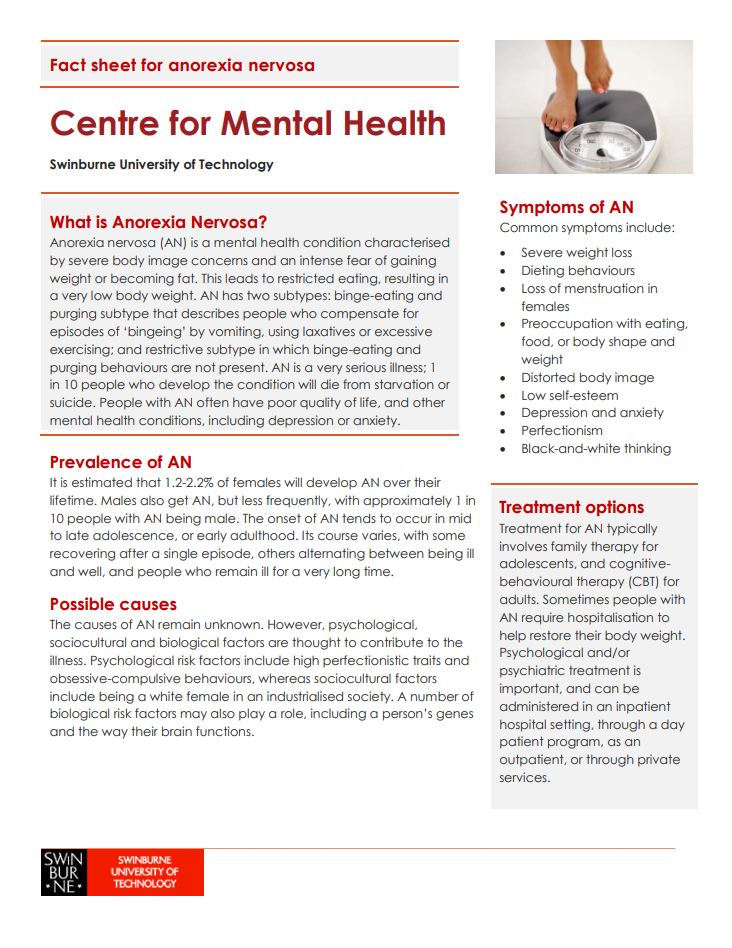Anorexia Nervosa
Anorexia Nervosa (AN) is a mental health condition characterised by severe body image concerns and an intense fear of gaining weight or becoming fat. This leads to restricted eating, resulting in a very low body weight.
Our findings
AN has two subtypes: binge-eating and purging subtype that describes people who compensate for episodes of ‘bingeing’ by vomiting, using laxatives or excessive exercising; and restrictive subtype in which binge-eating and purging behaviours are not present.
AN is a very serious illness; 1 in 10 people who develop the condition will die from starvation or suicide.
People with AN often have poor quality of life, and other mental health conditions, including depression or anxiety.
Key findings
1.2-2.2%
of females will develop AN
1 in 10
people with AN are male
1 in 10
people with AN die from starvation or suicide
Prevalence of AN
It is estimated that 1.2-2.2% of females will develop AN over their lifetime. Males also get AN, but less frequently, with approximately 1 in 10 people with AN being male.
The onset of AN tends to occur in mid to late adolescence, or early adulthood. Its course varies, with some recovering after a single episode, others alternating between being ill and well, and people who remain ill for a very long time.
Possible causes
The causes of AN remain unknown. However, psychological, sociocultural and biological factors are thought to contribute to the illness. Psychological risk factors include high perfectionistic traits and obsessive-compulsive behaviours, whereas sociocultural factors include being a white female in an industrialised society.
A number of biological risk factors may also play a role, including a person’s genes and the way their brain functions.
Symptoms
Common symptoms include:
- Severe weight loss
- Dieting behaviours
- Loss of menstruation in females
- Preoccupation with eating, food, or body shape and weight
- Distorted body image
- Low self-esteem
- Depression and anxiety
- Perfectionism
- Black-and-white thinking
Treatment options
Treatment for AN typically involves family therapy for adolescents, and cognitive behavioural therapy (CBT) for adults. Sometimes people with AN require hospitalisation to help restore their body weight.
Psychological and/or psychiatric treatment is important, and can be administered in an inpatient hospital setting, through a day patient program, as an outpatient, or through private services.
Explore our other research themes
Contact the Centre for Mental Health
There are many ways to engage with us. Whether you’re a PhD student, media, or an organisation looking to form a partnership, contact the Centre on +61 3 9214 5356 or via cmh@swinburne.edu.au.


